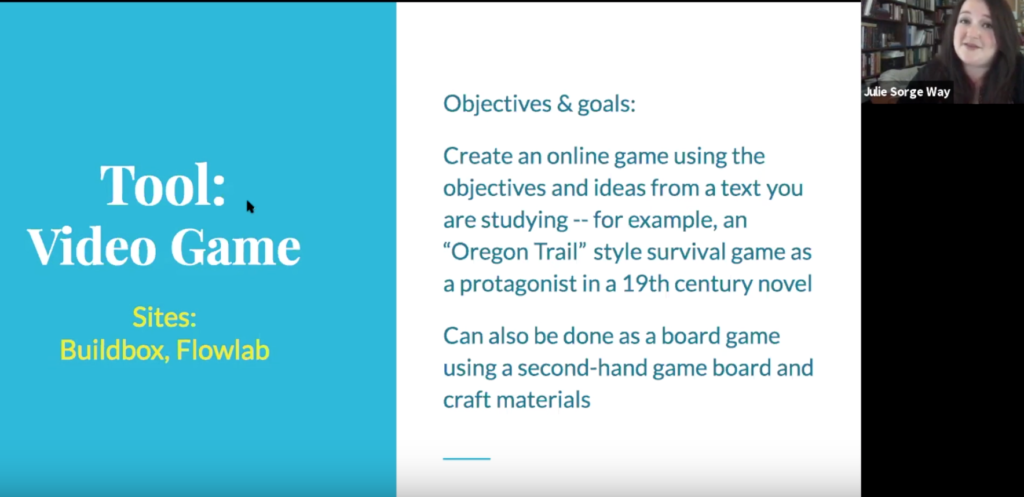This past May, as part of our work as HASTAC Scholars, my colleague Rachel Willis and I presented for HASTAC in their Digital Fridays series, on the topic of using digital tools as meaningful course assignments, in addition to or in place of traditional papers.

Some of the assignments and tools we discuss in this presentation include:
- timeline tools
- mapping
- web publishing
- textual analysis tools
- photo essays
- video and board games
- object creation (via tools like Sketchup or Tinkercad)
- podcasting
We enjoyed thinking through what can be beneficial for student learning about these alternative assignment types. Here are a few of our main takeaways:
- Think beyond “just” papers: Papers can be an excellent evaluation technique, but their use is rooted in many assumptions about thinking, knowing, and literacy. They are not always the best vehicle students have for demonstrating their learning.
- With digital tools, walk students through exploring the interface early on. Model discovery. Don’t assume students know very much and build in class-time to take them through as much as possible technology-wise.
- When in doubt, involve students in decision making. For example, allow students to work alone or in groups. Offer them two different deadline choices. Give them a selection of assignments to choose from. This is another way of acknowledging student agency and recognizing that choices students make usually play to their strengths.
- Imperfection is better than inaction. We learn from every change we make to courses and assignments, so even though we risk making mistakes, the work of a more inclusive, practical learning environment is important enough to warrant the risk.
Thank you to Rachel for researching and presenting this with me, and to HASTAC and our facilitator Adashima Oyo as well.

